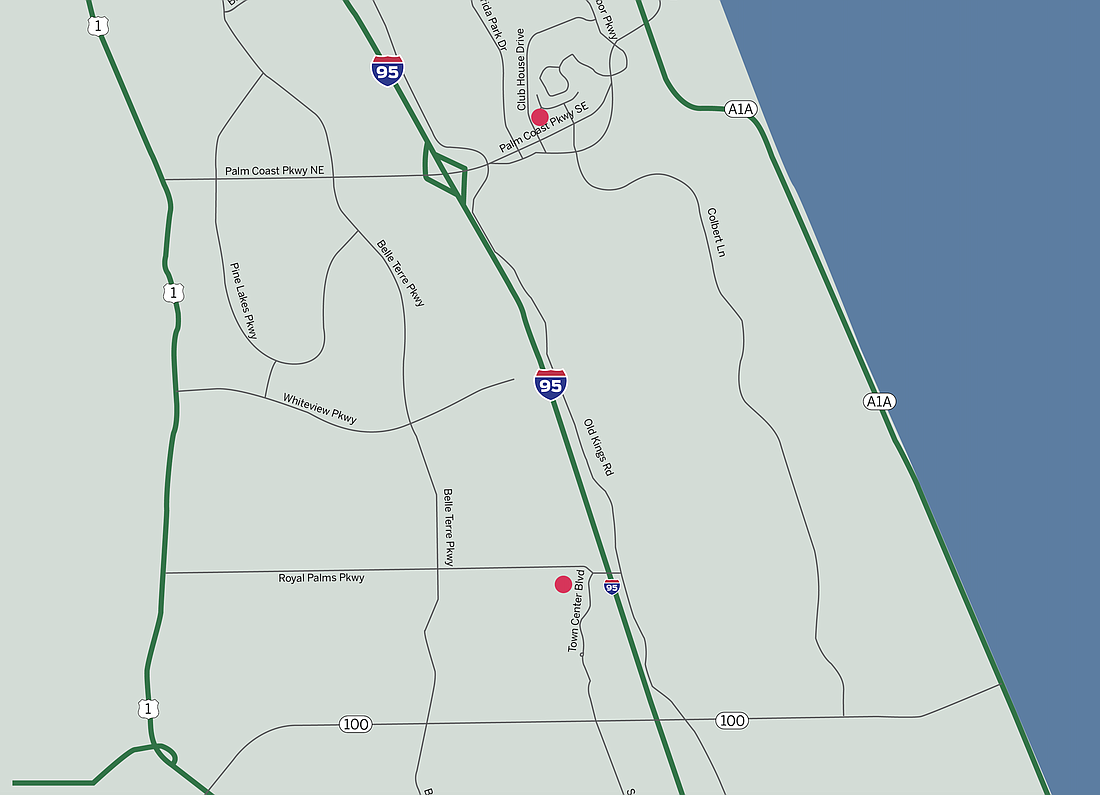- January 14, 2025
-
-
Loading

Loading

With assurances that the tower would be built to look like a tree, and with assurances from city staff that other alternatives near the Palm Harbor Golf Club were not viable, the Palm Coast City Council on June 21 voted to allow Diamond Towers V LLC to proceed with the next steps toward building a communications tower on city-owned land at a utility pump station off Clubhouse Drive. A second tower is also planned southwest of the intersection of Town Center Boulevard and Royal Palms Parkway.
Both towers should help improve cell reception for residents in those areas. Both towers would be up to 150 feet tall. In each case, a site development fee of $25,000 would be paid to the city; in addition, the city will receive 40% of any new recurring revenue generated by the new towers.
“Our aging population is increasingly vulnerable to health and safety emergencies,” said Mayor David Alfin, who voted for the proposal. “Residents should be confident that cell phone service will be available everywhere, at any time in Palm Coast.”
The city entered an agreement with Diamond in 2017 after hearing from cell phone carriers that the city's ordinances made it burdensome to build towers in Palm Coast.
Under the agreement, Diamond builds the towers on city land, and carriers like T-Mobile or AT&T can then enter a contract to place their antennas on the towers, Palm Coast IT Director Doug Akins said at a June 14 council workshop.
But that contract expired last month, while city staff were still in discussions with Diamond about adding towers at the Clubhouse Drive and Town Center Boulevard sites.
T-Mobile is interested in the Royal Palms/Town Center Boulevard site, while AT&T is interested in the Clubhouse Drive location. Other carriers could be added, but Diamond’s representative said communications companies are usually easier to negotiate with after the tower is already built.
So far, Diamond has built three towers — one on Palm Coast Parkway near Heroes Memorial Park, one on Palm Harbor Parkway near Fire Station No. 24, and one near the city's tennis center.
When the the city proposed adding a tower in the Palm Harbor Golf Club area several years ago, it encountered resistance from locals, and the City Council voted against it.
Similarly, some residents near the golf club continue to oppose any towers nearby.
“The last location wasn’t that great, at the golf course,” City Council member Eddie Branquinho said June 21. “This one, in my opinion, is even worse. But then again, we need the service.”
The late Lou Vitale proposed alternative locations, and Akins said June 21 that each had been investigated and rejected for legal and practical reasons (one was in a flood zone, one was in a greenway parcel, one lacked appropriate setbacks, for example). The only viable options, Akins said, was at the utility pump station.
Resident Celia Pugliese said health was a concern of neighbors, due to the 5G technology. What if, some day in the future, we learn that it’s dangerous to live under a cell tower, just like we have learned, decades later, that tobacco and asbestos are dangerous?
Greg Blose, president and CEO of the Palm Coast Regional Chamber of Commerce, said cell reception in the city is “pretty terrible” and needs to be addressed. Still, he said he sympathizes with people who live right by the tower. “Location is going to be an issue for any resident,” he said. “If it was going by my house, I’d probably be saying something about it, too.”
City Council member John Fanelli noted that he has family living near a tower, and it didn’t negatively impact property values.
Fanelli’s and Branquinho’s reluctance to support the tower was evident in their refusal to second Councilman Ed Danko’s motion to lead to a vote. Alfin passed the gavel to Branquinho, who is serving as vice mayor, and made the second himself. Then it passed 4-0. Councilman Nick Klufas was absent.
Although the City Council approved Diamond’s request, several steps remain before construction could begin. Diamond will host a neighborhood meeting in July to hear residents’ concerns. Design plans would then need to go to the city’s planning board and then City Council again.
— Jonathan Simmons contributed.